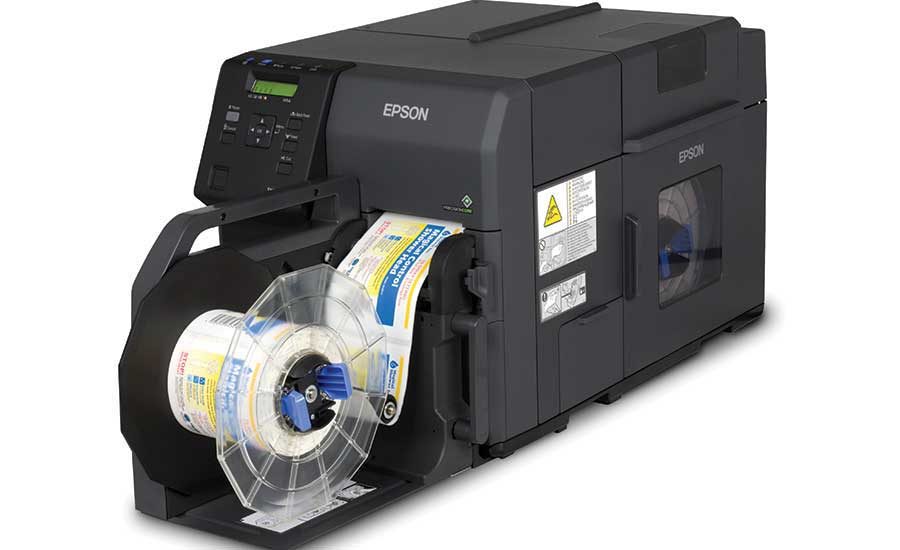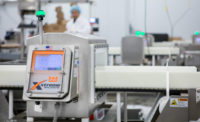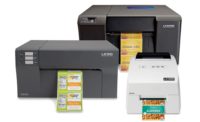The latest printing equipment and software for the production of food labels is designed to enhance product appeal and better communicate information on food content. Technological advances have improved printing speed, accuracy and flexibility to accommodate different types of labels and provide quick changeover.
Much of the improvement has come in the area of on-demand color printing of labels. The biggest trends include a sharp increase in speed and image quality. While on-demand color printing technology has existed for years, the speed was limited so it was only suitable for short production runs. Today, simple solutions are available with high-image quality that can produce tens of thousands of labels per day.
Some of the latest printers are driven by RIP (raster image processing) software that yields color matching, an image quality previously only found on sophisticated printing presses. “The result is high image quality by non-press experts. In terms of media, these new printers not only produce high image quality, but also durability. Water, oils and alcohol no longer pose a problem with the latest media materials,” says Andy Scherz, senior product manager, Epson America Inc., Long Beach, CA.
The demand for more variability in color printing is driving the need for better on-demand solutions. On one hand, customers are looking for more product diversity tailored to micro markets. On the other, product safety, content and nutritional labels are using color detail to help improve communication and clarity.
“It is all about reaching and connecting with customers,” Scherz adds. “With on-demand labeling solutions, it is now possible to target specific segments. Targeting can be as small as a single community or a single month. On-demand means the labels can accommodate marketing ideas with no need to meet minimum print-run quantities.”
Cutting-edge innovations
Primera Technology Inc., Plymouth, MN, has introduced the LX500 Color Label Printer. The desktop label-and-tag printer features a tri-color ink cartridge that keeps cost-per-label low. An optional built-in, guillotine-style cutter allows users to quickly print and cut short-run labels, according to Amber Miller, product manager.
Printer drivers are included for Windows 7/8/10, along with Bartender Ultralite Software (for Windows) to format label designs, and add barcodes and QR codes. Most popular graphic design programs for Windows can be used to design and print labels. In addition, a Mac driver is under development, Miller notes.
Videojet Technologies, Chicago, has released the Videojet 9550 Print & Apply Labeler. It features Intelligent Motion technology, which reportedly enables precise control of the entire system while eliminating adjustments.
The system minimizes misapplied and snapped labels with Direct Apply self-adjusting label placement, which accommodates varying line speeds, throughput and package sizes. An intuitive touchscreen interface helps reduce operator error and ease job selection. Also, due to its simple web path, operators can perform label and ribbon changes in less than 60 seconds.
“Inline printing means there is no need to carry an inventory of pre-printed labels, which helps food processors better accommodate variability in SKUs. By improving end-of-line efficiencies, Intelligent Motion reduces the primary causes of downtime: label, web and ribbon jams, and mechanical failures and adjustments,” says Arthur Smith, global marketing manager, Videojet.
Another innovation is the Videojet 9550 Corner Wrap system, which is suitable for cases or shrink-wrapped products where the label must be applied across adjacent panels so that information can be seen from various angles. “In many instances, a manufacturer’s distribution and retail partners want the label information visible on the case in more than one orientation. The Corner Wrap process is more efficient than printing and applying two separate labels,” Smith adds.
EPI Labelers, New Freedom, PA, has unveiled the Model 262, which is designed to print production and lot numbers, bar codes and product information. “The design and high speed of the labeler allow it to accommodate print-and-apply challenges by using a high-torque, five-phase stepper motor to drive labels at high speeds. The drive preserves printer components, while allowing the labeler to reach into the tight spaces,” says Katie Williar, marketing coordinator.
Easy to set up and operate, the Model 262 labeling system easily integrates into different packaging systems, Williar adds. Also, it is made with corrosion-resistant materials and can withstand harsh conditions.
John Tierney, marketing director, Linx Printing Technologies, St. Ives, England, says that continuous inkjet (CIJ) printing offered by Linx provides a versatile coding solution on packaging lines. “The print head is small enough to fit into any packaging line and can facilitate coding in any orientation; a flexible conduit with a choice of lengths helps in this case, as the printer can be positioned away from the point of coding if space on the line is restricted.”
A wide range of inks is available based on color and speed of drying, adds Tierney. So it’s easy to find an ink to suit individual applications. Some CIJ printers also have a carton coding function that enables both primary and secondary cartons to be coded with the same printer.
“Lower-speed lines with regular packaging shapes could benefit from simpler coding technologies such as thermal inkjet (TIJ) coders,” Tierney says. “They use technology similar to desktop printers and are easy to install. High resolution, quality codes offer an alternative to entry-level coding such as roller coders. Also, this technology can replace labels with direct coding onto the packaging, thereby reducing inventory and SKUs.”
Software advancements
A variety of label-creation software options are available to give producers the ability to customize the labeling process. Examples include safety, warning and nutrition label templates, as well as graphic design templates.
Epson America recently added Wasatch SoftRIP software to its ColorWorks C7500G on-demand inkjet label printer. Featuring speeds up to 59 feet per minute, the combination produces full-color, glossy labels with spot color matching. The printer allows users to quickly adjust the size of a label and create the desired print layout by adding columns and rows. In addition, rotary cutting marks can be added directly from the main screen of the user interface.
Wasatch SoftRIP includes color-management options, including spot color replacement, and support for file formats such as PDF and TIFF, as well as optional variable data printing (VDP) for sequential numbering, barcodes or images that can be inserted and managed.
By using 3D packaging design software—such as the Studio application from Esko, Miamisburg, OH—food processors can experiment with different ideas, according to Joe Eckerle, director, brand owner sales. “They can build designs around packaging in 2D or 3D, to see how a package will look—special effects and all. Users can quickly check finishing effects, as well.”
The Esko Studio Store Visualizer allows users to view packaging designs on the shelf and present a complete product launch in 3D. This includes retail-ready packaging and displays. “Brand owners can see how a product sits alongside the competition and even walk through the store taking in the visual impact. Store Visualizer integrates with planogram systems to create and populate virtual 3D stores in minutes,” Eckerle says.
Liner-free solutions
Some of the biggest problems that producers face during high-speed packaging operations center on misapplied labels, label jams, wrinkled labels and constant mechanical adjustment. On a more-basic level, they face other challenges, as well, including: finding the right label material (paper or polyester) for their product and conditions; finding the right label material finish (glossy or matte) for their label design; whether to hand-apply labels or use a label applicator; and what printer type to use for their application.
More food processors are looking at liner-free label solutions, which eliminate label backing and its inherent waste, according to Brett Wedel, sales manager, NuLabel Technologies Inc., East Providence, RI. The company offers Catalyst, a liner-free printer applicator that reportedly improves flexibility and throughput while reducing downtime. The liner-free label media is in continuous form—no gap between labels—which allows for label rolls to be interchanged regardless of label feed (length).
“This allows for variable-label lengths in a single run, meaning a brand can use different lengths based on the case being labeled without changeover or downtime,” Wedel says. “The system allows for twice as many labels per roll, cutting roll changeovers in half, compared to linered pressure-sensitive (PS) material. When a roll is changed, the changeover is quicker than that of a PS roll with no waste (liner) to feed through the rewind reel.”
The net result is increased flexibility and reliability—attributes any snack producer or bakery can get behind.














